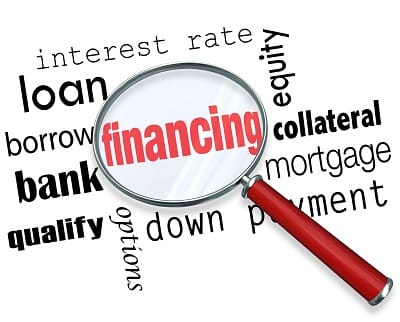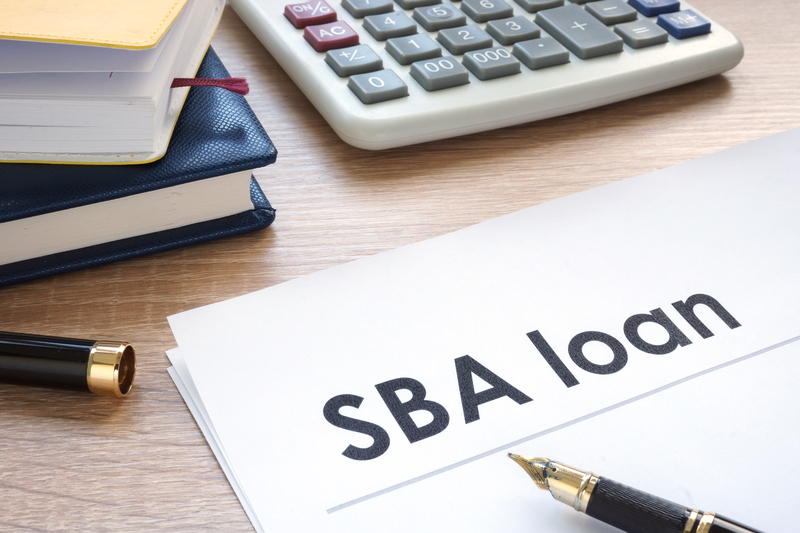There is a common belief that SBA loans are difficult if not nearly impossible to obtain when buying a business. Being difficult and/or impossible to get is a myth and a harmful one that causes many prospective buyers to not even consider SBA financing. SBA financing is complicated and does require a lot of paperwork, but if you work with an experienced business broker who understands SBA financing and a good bank it goes smoothly.
At Pacific Business Sales we have been doing SBA 7a business acquisition loans directly with SBA PLP (Preferred Lender Program) banks since 2001 and have long-running relationships with these lenders. We know what the banks require of the buyer and the business, consequently, we close well over 90% of the SBA loans we submit with a purchase offer. As the California business broker representing a seller, we work closely with the banks when we initially bring a business to market and have the bank review the business for a pre-approval and give us the financing estimates for rates, terms and closing costs.
SBA financing is the best financing available for the purchase of a small or mid-size business, if it is available on the transaction. While SBA financing does require a buyer to have good credit and a business with solid earnings, it is well worth the extra effort as it will allow you to buy a bigger business with a much lower down payment which will result in greater cash flow and result in much higher Discretionary Earnings from your acquisition.
Advantages of SBA Financing for Buyers
- Low Down Payment:
SBA loans now offer down payments as low as 10% for qualifying buyers and businesses. - 10 Year Financing:
Seller notes are typically 5 years and, in some cases, less than 5 years which results in a short loan amortization and consequently high monthly payments even at a low interest rate. SBA financing for business acquisitions (SBA 7a loans) are amortized over 10 years which results in lower monthly payments. - Maximum Leverage on Minimum Equity:
The 10% down payment results in buyers to buy a much larger business than they would with Seller Financing. Normally a 50% or higher down payment is required by sellers and many sellers in small businesses offer no financing. - Enables Buying a Bigger & More Profitable Business:
By leveraging the available cash a buyer has, a buyer can buy a much larger business with higher revenues (businesses are valued on a multiple of earnings, thus a business with higher earnings will have a higher value). - Enables Buyers to Consider a Wider Range of Businesses
- By providing lower down payments, longer repayment terms, competitive interest rates, and flexibility in fund usage. and the inclusion of intangible assets further broadens the range of businesses that buyers can consider. With the support of SBA-backed loans, buyers can explore and acquire businesses that might otherwise be out of reach, enabling them to pursue their entrepreneurial goals with greater confidence and financial security which in turn generates confidence in offering a higher price then they otherwise would.
Advantages of SBA Financing for Sellers
- More Cash at Closing:
With SBA financing the lender can finance up to 90% of the transaction up to $5 million with a 10% buyer down payment. In this structure the seller receives 100% cash at closing. In some instances, lenders may want the seller to carry a 10% to 15% seller note, and this still provides the seller with 90% to 85% cash at closing. - More Buyers Qualify to Buy Your Business:
The 10% down payment opens the pool of buyers. - SBA Financed Businesses Sell Faster:
Businesses with SBA financing available get more inquiries because there are more buyers that have the minimum down payment and buyers see SBA financing as indicating it is a quality business. - SBA Financed Businesses are More Likely to Sell:
Businesses with SBA financing have more inquiries and buyers that are better qualified, this also improves the likelihood of closing. - Lower Seller Note and Lower Risk:
With the SBA lender carrying most of the debt, they are also carrying more of the risk. The bank underwriters do a thorough credit review of the prospective buyer and net after debt service.
Comparing SBA Financed, Seller Financed and Non-Financed Business Acquisitions
For the sake of a simple comparison and easy math below is an example of a buyer with approximately $150,000 to invest. He is considering 3 businesses with different financing terms ranging from an all-cash to SBA financing, as the buyer has a total of $150,000 to invest we will reserve $25,000 for working capital on the smaller examples and $50,000 for working capital on the larger examples:
Example 1: Cash Offer, No SBA Financing, No Seller Financing
In this example, the buyer is making an all-cash offer of $125,000 with $25,000 reserved for working capital.
- Purchase Price: $125,000
- Down Payment: $125,000
- Working Capital and other Costs: $25,000
- Discretionary Earnings: $62,500 (assuming Purchase Price or Value = 2 X Discretionary Earnings which is typical for a small business)
- Cash on Cash Return: 50% (seems impressive, but read on…)
Example 2: 50% Down Payment with 50% Seller Note
In this example the buyer is making an offer with a 50% down payment of $125,000 and a Seller Note of $125,000 (50% of transaction value) at 8% over 60 months (typical Seller Note terms).
- Purchase Price: $250,000
- Down Payment: $125,000
- Working Capital and other Costs: $25,000
- Seller Note Annual Debt Service: $30,414 ($125,000 Seller Note, 8%, 60 months)
- Discretionary Earnings: $125,000 (assuming Purchase Price or Value = 2 X Discretionary Earnings which is typical for a small business)
- Net After Debt Service: $94,585
- Cash on Cash Return aka ROE: 76%
Example 3: 10% Buyer Down Payment, 90% SBA financing and No Seller Financing
This is where it gets interesting! By leveraging their down payment the buyer can buy a much larger business with substantially higher earnings. In this example the buyer has a down payment of $100,000, with $50,000 set aside for working capital (an increase of $25,000), and SBA financing for 90% of the transaction value for a total acquisition value of $1,000,000.
- Purchase Price: $1,000,000
- Down Payment: $100,000
- Working Capital and other Costs: $50,000
- SBA Loan Annual Debt Service: $$131,034 ($900,00 SBA loan, 8%, 120 months, current rates as of Nov 2018)
- Discretionary Earnings: $400,000 (assuming Purchase Price or Value = 2.5 X Discretionary Earnings which is typical for a business of this size)
- Net After Debt Service: $268,966
- Cash on Cash Return aka ROE: 269%
Example 4: 10% Buyer Down Payment and a Seller Note of 10% of Transaction Value
In some cases the bank underwriter may require a small seller note with the SBA loan, likewise sometimes the buyer may ask for a seller note as part of their offer. In this example the buyer has a down payment of $100,000, with a seller note of $100,000, and an SBA loan of $800,000.
- Purchase Price: $1,000,000
- Down Payment: $100,000
- SBA Loan Annual Debt Service: $116,474 ($800,00 SBA loan, 8%, 120 months, current rates as of Nov 2018)
- Seller Note Annual Debt Service: $24,332 ($100,000 Seller Note, 8%, 60 months)
- Total Annual Debt Service: $140,806
- Working Capital and other Costs: $50,000
- Discretionary Earnings: $400,000 (assuming Purchase Price or Value = 2.5 X Discretionary Earnings which is typical for a business of this size)
- Net After Debt Service: $259,194
- Cash on Cash Return aka ROE: 259%
Example 5: 10% Buyer Down Payment with A/R Financed
Financing the A/R with the purchase of the business is a good deal for the buyer and the seller. The buyer obtains working capital through the purchase and financing of the A/R and the seller increases his cash at closing. Underestimating the required working capital or not even considering working capital until very late in the transaction is a common mistake by buyers. By financing the A/R buyers reduce the working capital they need to bring into the business and preserve their cash. For this example we kept the working capital reserve at $50,000 plus the A/R to keep the down payment the same as example 3 and 4.
- Purchase Price: $1,075,000 (includes $75,000 of A/R plus purchase price of $1,000,000)
- Down Payment: $107,500
- SBA Loan Annual Debt Service: $967,500 ($967,500 SBA loan, 8%, 120 months, current rates as of Nov 2018)
- Total Annual Debt Service: $140,861
- Working Capital and other Costs: $50,000 plus A/R purchased of $75,000
- Discretionary Earnings: $400,000 (assuming Purchase Price or Value = 2.5 X Discretionary Earnings which is typical for a business of this size)
- Net After Debt Service: $259,138 (note that the Net After Debt Service is almost the same as the previous example and in this example the buyer has an additional $75,000 of working capital)
- Cash on Cash Return aka ROE: 241%
As you can see, SBA financing really is advantages and a great deal for buyers and sellers. Sellers get more cash at closing and buyers can leverage their down payment to buy a much larger business increasing their Net After Debt Service Earnings and their Cash on Cash Return (ROE).
Contact us for information on SBA financing with the sale of your business or purchase of a business.





